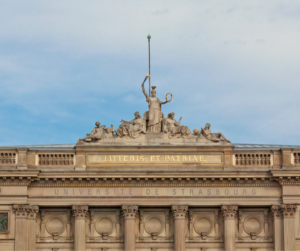University of Strasbourg: a bit of history…
Did you know that the University of Strasbourg is the second largest university in France, after that of Aix-Marseille in Provence? It boasts a long history, which begins in the 16th century…
It was born thanks to Johannes Sturm, a Protestant schoolboy: it was the time of Humanism, and the need and duty to spread knowledge was increasingly felt.
The initial project was to found a Protestant school, which in 1631 culminated in the establishment of the Royal University, the so-called Universität Straßburg.
Subsequently, under the rule of the German Empire of Kaiser Wilhelm II, the University experienced a period of prosperity: new academic disciplines were born, institutions were founded and libraries were built.
After the First World War, the University returned to French again, but with the German invasion things changed; there was a great revolt by French pupils and professors, united in the Resistance led by Marc Bloch, a history professor who was later executed.
In 1970, the University of Strasbourg was divided into three large institutions: Strasbourg I, dedicated to scientific disciplines; Strasbourg II, hub of humanistic and literary subjects; Strasbourg III, for the study of political and technological sciences and jurisprudence.
In the 2000s, the merger of these three gave rise to the current University, which today is part of the League of European Research Universities.
Graziadio for the Strasbourg University’s Data Center
It is a source of pride for us to have supplied our busbars for a large and important institution such as the University of Strasbourg, in particular for the installation of its Data Centers, an area in which Graziadio has gained strong experience over the years .
In this case, Graziadio focuses on two principles: Simplicity and Modularity.
Simplicity because an overly complex structure would mean more components, and consequently a greater probability of critical issues arising.
Modularity with a view to any updates to the Data Center, so that components can be added, eliminated or modified without compromising the rest of the structure.
The chosen busbars: K Series and GDA
Among the various bus units in our range, those found to be most suitable for meeting the needs of Data Centers were the two lines K Series and GDA.
Let’s look at the main reasons:
- K Series: the strong point of this line is undoubtedly the thermal factor, which absolutely should not be overlooked when it comes to “sensitive” structures from this point of view. In fact, K Series allows better heat dissipation thanks to its black painting and reduces temperature increases. Its internal conductors, then, are individually insulated. Furthermore, in compliance with the requirement of simplicity, it has very compact dimensions and is very easy to assemble.
- GDA: here too we find speed and ease in the assembly phase, thanks to the monobloc joints which do not require special tools. It also offers high heat dissipation in environments with little air circulation. Furthermore, the system can be expanded at very low costs by adding junction boxes.
One last curiosity: by looking closely at the building, you can find some architectural elements typical of the classic Italian style. Thanks to the architect Otto Warth who, after a year of studies in Italy, wanted to bring Italian beauty back into the project commissioned to him.
And we like to think that, just like the architect at the time, we too, with our busbars, have contributed to bring a bit of our Made in Italy inside a building of great importance such as the University of Strasbourg.
Graziadio. Yes, We Busbar
